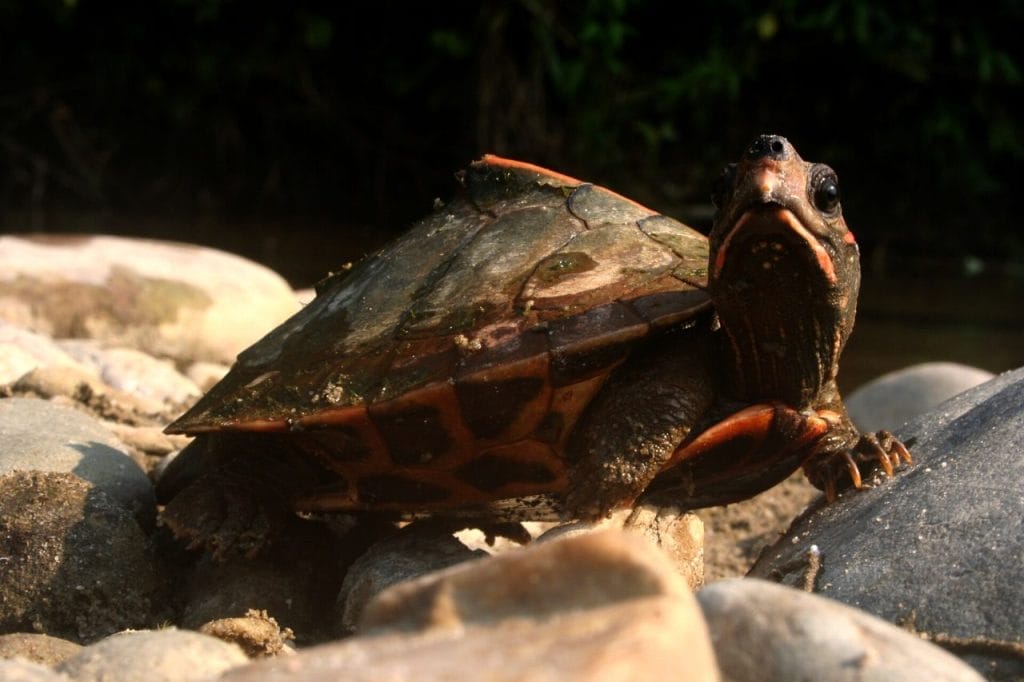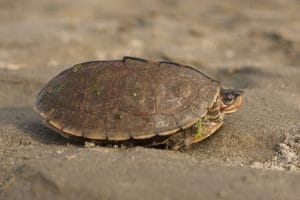Pangshura sylhetensis (Assam Roofed Turtle)
Home > Turtle Database > Pangshura sylhetensis (Assam Roofed Turtle)

Pangshura sylhetensis, also known as the Assam Roofed Turtle, is a rare freshwater species found in parts of Northeast India and Bangladesh. It is small, brightly colored, and critically endangered due to habitat loss and limited distribution.
Native Turtle Species Map – Find Turtles by Region
Scientific Classification
Kingdom: Animalia
Phylum: Chordata
Class: Reptilia
Order: Testudines
Family: Geoemydidae
Genus: Pangshura
Species: P. sylhetensis
Common Names
Assam Roofed Turtle
Sylhet Roofed Turtle
This Hilarious Turtle Book Might Know Your Pet Better Than You Do
Let’s be real—most turtle care guides feel like reading a textbook written by a sleep-deprived zookeeper.
This one’s not that.
Told from the snarky point of view of a grumpy, judgmental turtle, 21 Turtle Truths You’ll Never Read in a Care Guide is packed with sarcasm, sass, and surprisingly useful insights.
And hey—you don’t have to commit to the whole thing just yet.
Grab 2 free truths from the ebook and get a taste of what your turtle really thinks about your setup, your food choices, and that weird plastic palm tree.
It’s funny, it’s honest, and if you’ve ever owned a turtle who glares at you like you’re the problem—you’ll feel seen.
Identification
Description
This turtle is small in size, usually growing up to 20 cm in shell length. It has a flat, oval carapace with a distinct keel and a slight roof-like ridge, giving it the “roofed” look. The shell has olive to brown coloration with light yellow streaks, while the head has bright yellow and black markings.
Sexual Dimorphism
Males are smaller and have longer, thicker tails. Females have shorter tails and a broader shell.
Check more turtles from the Pangshura genus
Native Origin and Distribution
Geographical Range
This species is native to the northeast region of India, especially Assam and parts of Tripura, and also found in the Sylhet region of Bangladesh. Its range is very limited, making it hard to spot in the wild.
Preferred Habitat
It prefers slow-moving freshwater bodies like rivers, streams, and floodplains with sandy or muddy bottoms. It often hides among aquatic vegetation and submerged roots.
Behavior
Feeding Habits
This turtle is omnivorous. It eats aquatic plants, small insects, worms, and crustaceans. It forages during the day, mostly in shallow water.
Predators
Natural predators include birds, large fish, and mammals. Eggs and hatchlings are especially vulnerable to snakes and monitor lizards.
Reproduction
Breeding Season
Breeding usually occurs during the dry season, from late winter to early summer.
Reproductive Method
It lays small clutches of eggs in sandy banks. Females dig shallow nests above waterlines and cover the eggs with soil.
Conservation
Extinction Status
Critically Endangered (IUCN Red List)
Threats
The main threats are habitat destruction, sand mining, water pollution, and illegal pet trade. Limited range also adds to the risk.
Conservation Measures
Some legal protection exists under Indian wildlife laws. Local and global conservation groups are working on habitat protection and awareness campaigns. Captive breeding is being explored.
Economic Importance
This turtle has no major economic role. In the past, it was sometimes caught for the local pet trade, but now such trade is banned.
Interesting Facts
It was once believed to be extinct until rediscovered in the early 1990s.
It is one of the rarest turtles in South Asia and a symbol of Northeast India’s rich biodiversity.
Despite its bright colors, it is excellent at hiding in muddy waters.

About Author
Muntaseer Rahman started keeping pet turtles back in 2013. He also owns the largest Turtle & Tortoise Facebook community in Bangladesh. These days he is mostly active on Facebook.














